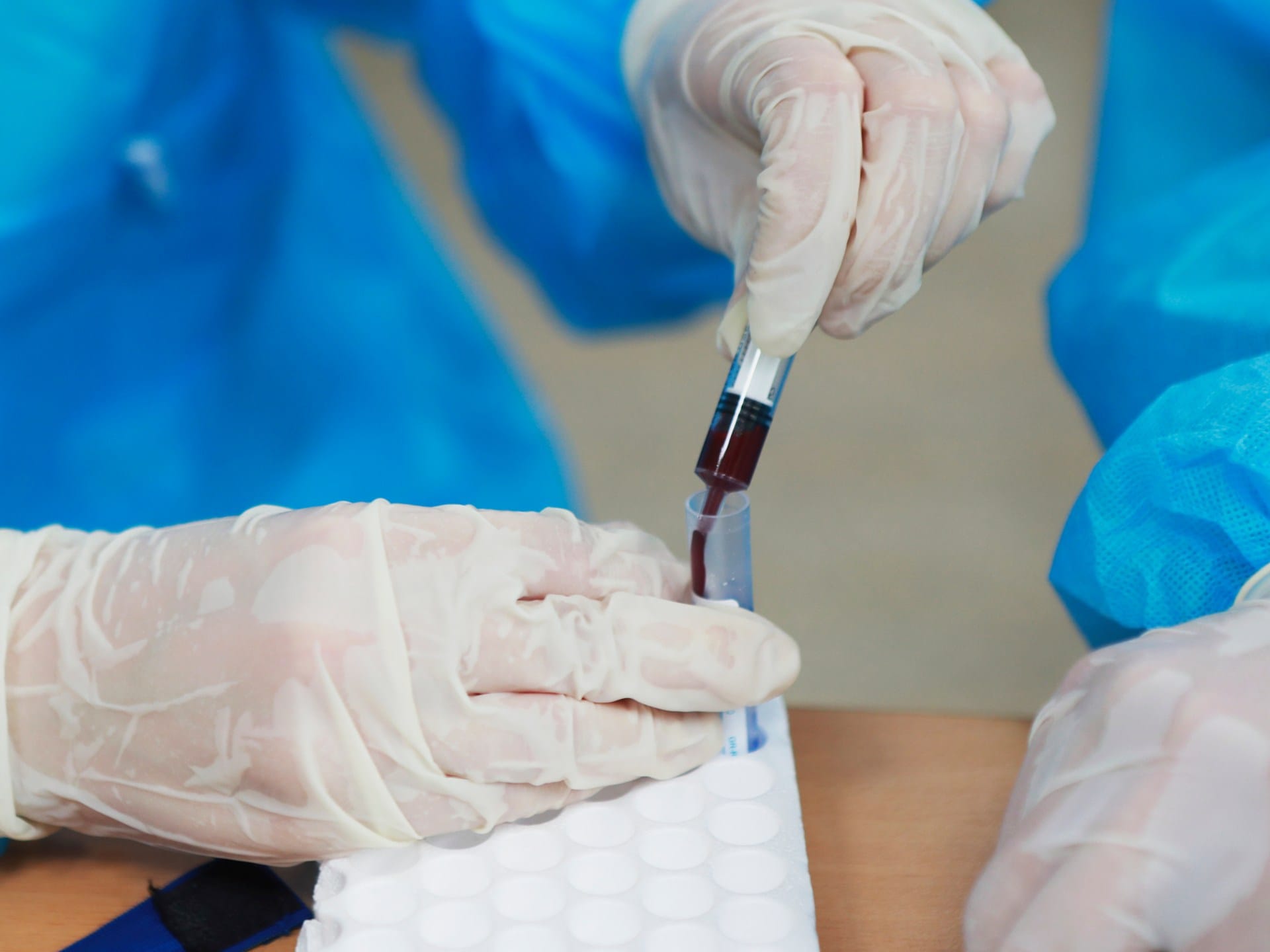Scientists are exploring the production of artificial blood amid shortages of blood and the need for safe transfusions.
Millions of people die globally each year due to lack of access to blood, studies by the World Health Organization (WHO) have shown.
Blood carries oxygen throughout the body and removes waste products, among many other critical functions.
Laboratory-grown blood was used on humans in the first clinical trial in 2022, particularly in patients with rare blood groups.
Scientists are also working to develop synthetic blood as part of efforts to support emergency medicine, surgery, and transfusions.
So how close are scientists to developing artificial blood?
What is artificial blood?
Artificial blood is a broad term that includes both lab-grown and synthetic blood.
Synthetic blood, which is still being studied, is a completely man-made substitute and does not contain human cells. These engineered molecules mimic the function of blood cells by transporting oxygen. It is designed mainly for emergency use or military medicine, where immediate oxygen delivery is needed but matching blood types is difficult.
For example, the United States military has invested $46m in developing ErythroMer, a synthetic blood substitute designed to be universally compatible and stable without refrigeration. This product is still undergoing research and testing to establish its safety and effectiveness.
On the other hand, lab-grown blood is created by growing human red blood cells in a controlled environment outside the body.
Once available, lab-grown blood cells could make the treatment of certain medical cases more effective, Cedric Ghevaert, professor of transfusion medicine at the University of Cambridge in the United Kingdom, said. For example, lab-grown platelets may be better at stopping bleeding in trauma patients compared to those given to leukaemia patients, who receive platelets to prevent bleeding rather than to stop active bleeding.
How is lab-grown blood made?
This process starts with stem cells, which are special cells that can develop into different types of cells in the body. They include red blood cells, platelets (which help blood to clot), or even skin cells, depending on where the stem cells are found and how they are stimulated.
Scientists use a specific type of cell called haematopoietic stem cells, which produce all types of blood cells, including white blood cells, red blood cells and platelets. They are found in bone marrow – the soft tissue inside bones – or in the blood of a donor.
To turn these stem cells into red blood cells, they are placed in a lab setting and exposed to growth factors – natural substances that help cells develop.
Over several weeks, the stem cells gradually change into mature red blood cells and function just like natural ones.
Ghevaert explained that scientists are able to “gene edit” stem cells to boost blood production and remove blood group markers. This could allow them to create blood that can be administered to anyone, without the need to match specific blood types.
How close are scientists to producing artificial blood?
Lab-grown or synthetic blood products are currently only in the research and development stage.
In 2022, a clinical trial in the UK marked a milestone by transfusing laboratory-grown red blood cells into human volunteers to assess their safety standards and longevity.
More trials would be needed before this product could be medically approved for commercial use.
Additionally, producing lab-grown blood is currently much more expensive than using donated blood.
In 2013, the Defense Advanced Research Projects Agency (DARPA), a US government agency, reported that the chemical materials required to produce one unit of lab-grown blood cost more than $90,000. Through advances in production methods, this cost has now been reduced to less than $5,000 per unit. By comparison, hospitals in the US paid an average of $215 per unit of donated red blood cells in 2019.
Has artificial blood been used in clinical trials?
Yes. A 2022 clinical trial in the UK marked the first instance of such a procedure.
A small initial study in Japan in 2022 tested haemoglobin vesicles, tiny artificial blood components designed to carry oxygen in the way that real red blood cells do. The study examined whether they could be a safe and effective alternative to regular blood transfusions.
The study involved 12 healthy male volunteers aged 20 to 50, divided into three groups. Each group received a single intravenous injection of haemoglobin vesicles in increasing amounts: 10ml, 50ml and 100ml.
Some participants experienced mild side effects, such as fever and rash, but these issues resolved quickly. There were no significant changes in vital signs, including blood pressure.
How far are we from manufacturing blood commercially?
There are still several obstacles on the path to commercially manufacturing blood.
These include the issue of how to increase production to meet clinical demand while ensuring the safety and functionality of lab-grown or synthetic blood products.
Additionally, regulators like the US Food and Drug Administration (FDA) and the European Medicines Agency are still determining whether lab-grown blood should be classified as cell therapy or medicine, which would determine how it would be regulated, explained Ghevaert.
“This is a novel type of product for any regulator, which means we are in unknown territory,” he said.
Can artificial blood be made for rare blood groups?
Yes, lab-grown blood can be tailored for rare blood types.
Synthetic blood, which is cell-free, carries oxygen without the need for specific blood group markers. This could make it a universal alternative for transfusions, reducing the need for exact matches.
Besides the typical ABO and Rhesus blood groups, scientists have identified 36 other blood group systems, each with unique characteristics.
In total, there are more than 600 different antigens – tiny markers on the surface of red blood cells that help the immune system recognise blood as “safe” or “foreign”.
A blood type is considered rare if it lacks common antigens that most people have or possesses unusual antigens that most people do not. This makes it more difficult to find compatible donors for transfusions.
The frequency of rare blood types varies between different populations and ethnic groups, meaning some people may have a harder time finding a safe blood match than others.
For example, “Bombay blood”, which originated in India, is a rare subset of the O blood group. With a frequency of less than one in 10,000 people worldwide, it is most common in India, Iran and parts of Southeast Asia.
Could the creation of artificial blood solve global blood shortages?
Artificial blood has the potential to alleviate global blood shortages, particularly in low- and middle-income countries, experts say.
According to the WHO, approximately 118.5 million blood donations are collected worldwide, with 40 percent gathered in high-income countries, which comprise only 16 percent of the global population.
Recent studies also show that nearly 2,000 units of blood per 100,000 people are needed to meet global medical demands, yet severe shortages persist, especially in sub-Saharan Africa, South Asia, and Oceania.
In these regions, where blood supply is critically low, mortality rates from haemorrhage are significantly higher than in wealthier nations.
Rural communities in low- and middle-income countries are hardest hit, forming “blood deserts” – areas where more than 75 percent of patients needing transfusions cannot access blood.
However, those shortages are primarily due to blood storage and access issues. For example, with blood banks often hours away, doctors in these regions are forced to delay or cancel lifesaving surgeries.
Ghevaert said one of the key advantages of lab-grown blood would also be its value in crisis situations, such as pandemics, wars or natural disasters when there is a sudden surge in demand.






